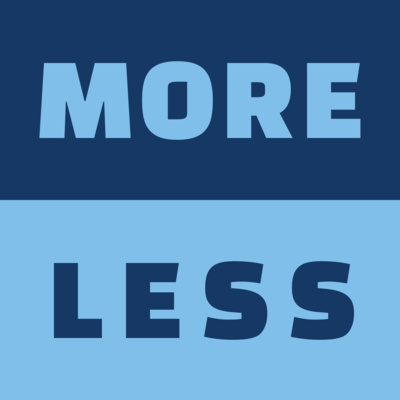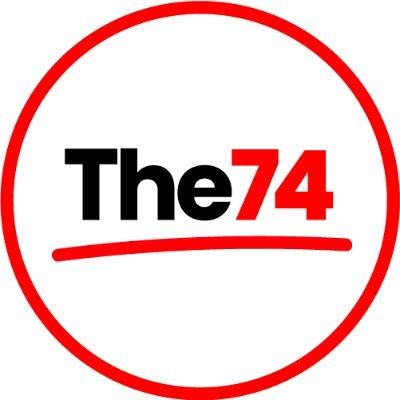Report on the Girls Braids Club Initiative and its Contribution to Sustainable Development Goals
Program Overview
The Girls Braids Club is a community-based initiative providing vocational training in hair braiding to girls aged 7 to 19 in King County, Washington. The third annual summer camp, held in Auburn and Seattle, focused on teaching protective hairstyles for textured hair, a skill with significant cultural and economic value.
- Objective: To equip young girls with a lifelong, marketable skill that promotes self-sufficiency, cultural pride, and economic independence.
- Founder: Chinenye “Chinny” Durueke.
- Target Demographic: Girls aged 7-19, with a particular focus on empowering Black girls.
- Program Structure: A free, four-week camp consisting of two-hour classes held on consecutive Saturdays.
Alignment with Sustainable Development Goals (SDGs)
The Girls Braids Club initiative directly supports several key United Nations Sustainable Development Goals through its targeted approach to skills development, economic empowerment, and community building.
Economic Empowerment and Poverty Reduction (SDG 1 & SDG 8)
The program provides a direct pathway to economic opportunity, addressing SDG 1 (No Poverty) and SDG 8 (Decent Work and Economic Growth).
- Income Generation: The founder, Chinenye Durueke, emphasized that hair braiding is a viable source of income that helped finance her own higher education. By teaching this skill, the club equips participants with the means for entrepreneurship and supplemental income.
- Household Cost Reduction: The high cost of professional hair braiding places a significant financial burden on families. By learning to braid for themselves and their siblings, participants help alleviate this budgetary pressure, contributing to household financial stability.
- Fostering Entrepreneurship: The initiative empowers girls to become future entrepreneurs, creating decent work for themselves and contributing to local economic growth.
Advancing Quality Education and Gender Equality (SDG 4 & SDG 5)
The club functions as an alternative educational platform that promotes lifelong learning and gender equality, in line with SDG 4 (Quality Education) and SDG 5 (Gender Equality).
- Vocational Training: The camp offers specialized, hands-on vocational training, providing a practical skill set that falls outside of traditional academic curricula but holds immense real-world value.
- Empowerment of Girls: The program is explicitly designed to empower girls by building their confidence and providing them with economic freedom.
- Addressing Inequality: By focusing on Black girls and the skill of braiding natural hair, the initiative addresses specific cultural and social needs, boosting confidence and reducing inequalities as per SDG 10.
Fostering Inclusive Communities and Strategic Partnerships (SDG 11 & SDG 17)
The operational model of the Girls Braids Club is built on collaboration and community, reflecting the principles of SDG 11 (Sustainable Cities and Communities) and SDG 17 (Partnerships for the Goals).
- Community Building: The program aims to create a network of “braid buddies,” fostering social cohesion and a supportive community network among participants.
- Strategic Partnerships: The camp’s success is enabled through key partnerships with the City of Auburn and the non-profit Empowering Youth and Families Outreach. These collaborations provide essential resources, including free community spaces and supplies.
- Resource Provision: Through its partnerships, the club provided free access to training, mannequin heads for practice, and all necessary hair supplies, ensuring accessibility for all participants regardless of economic background.
Future Outlook
The initiative has identified opportunities for expansion, contingent on securing further funding and partnerships. Future plans include:
- Developing virtual and fall classes to increase accessibility.
- Expanding the program’s geographic reach to serve interested participants in other areas, such as Tacoma.
- Addressing transportation limitations to ensure equitable access for all interested girls in the region.
Analysis of the Article in Relation to Sustainable Development Goals (SDGs)
1. Which SDGs are addressed or connected to the issues highlighted in the article?
-
SDG 1: No Poverty
The article connects to this goal by highlighting how the skill of hair braiding can alleviate financial burdens. It mentions the high cost of professional braiding and how the Girls Braids Club helps “alleviate financial stress on parents’ budgets.” The founder, Chinny Durueke, also shares her personal story of using braiding to pay for her education, demonstrating a direct pathway out of potential economic hardship.
-
SDG 4: Quality Education
The initiative is fundamentally an educational program. The article states that the girls “learned a special skill set that could last them forever.” This directly relates to providing lifelong learning opportunities and vocational skills outside of traditional schooling, which is a key aspect of quality education.
-
SDG 5: Gender Equality
The program, “Girls Braids Club,” specifically targets and empowers girls. The article emphasizes that the goal is to “empower girls — especially Black girls with natural hair.” By providing them with a skill that can lead to financial independence and confidence, the initiative directly contributes to gender equality. The founder describes the skill as “empowerment, it’s freedom.”
-
SDG 8: Decent Work and Economic Growth
The article strongly emphasizes the economic potential of the skill being taught. It is presented as a “source of income for future entrepreneurs” and a viable “side hustle.” The founder’s own experience of using braiding to pay for college and postgraduate school underscores its potential to create decent work and foster entrepreneurship among youth.
-
SDG 10: Reduced Inequalities
The program specifically focuses on empowering “Black girls with natural hair,” a demographic that can face unique social and economic challenges. By providing a free camp and teaching a culturally significant skill, the initiative works to reduce inequalities based on race and economic status. The article mentions how the high cost of hair care can be a barrier, and this program removes it, promoting inclusion.
2. What specific targets under those SDGs can be identified based on the article’s content?
-
Target 4.4: By 2030, substantially increase the number of youth and adults who have relevant skills, including technical and vocational skills, for employment, decent jobs and entrepreneurship.
The Girls Braids Club directly addresses this target by hosting a summer camp to teach over 50 girls a practical, vocational skill (hair braiding) that can be used for future employment or entrepreneurship.
-
Target 8.6: By 2020, substantially reduce the proportion of youth not in employment, education or training.
Although the 2020 deadline has passed, the spirit of the target is relevant. The camp engages youth (ages 7 to 19) in productive training during the summer when they are out of school, providing them with valuable skills and keeping them engaged.
-
Target 5.b: Enhance the use of enabling technology, in particular information and communications technology, to promote the empowerment of women.
While the primary skill is hands-on, the founder’s mention of potential “virtual… classes” indicates a plan to use technology to scale the program and reach more girls, thereby using technology to promote their empowerment.
-
Target 10.2: By 2030, empower and promote the social, economic and political inclusion of all, irrespective of age, sex, disability, race, colour, ethnicity, origin, religion or economic or other status.
The program’s focus on “Black girls” and its mission to “alleviate financial stress” by being a free camp directly works towards the economic and social inclusion of a specific ethnic and economic group, as described in the article.
-
Target 1.4: By 2030, ensure that all men and women, in particular the poor and the vulnerable, have equal rights to economic resources…
By teaching a skill that can generate income and reduce household expenses (“take that cost off your family’s budget”), the program provides girls and their families with access to an economic resource that can improve their financial stability.
3. Are there any indicators mentioned or implied in the article that can be used to measure progress towards the identified targets?
-
Indicator for Target 4.4: The number of participants in the training program.
The article explicitly states that “more than 50 girls in King County learned a special skill set.” This number serves as a direct indicator of the number of youth who have acquired a new vocational skill.
-
Indicator for Target 8.6: The number of youth engaged in vocational training.
The article mentions the camp is for girls “ages 7 to 19” and ran “every Saturday for four weeks.” The number of participants (50+) and the duration of the camp are clear metrics for measuring youth engagement in training.
-
Indicator for Target 10.2: The establishment and reach of programs targeting specific vulnerable groups.
The existence of the “Girls Braids Club” itself is an indicator. Its expansion through partnerships with the “city of Auburn and Empowering Youth and Families Outreach” and potential future “virtual and fall classes” can measure the progress of promoting inclusion.
-
Indicator for Target 1.4 & 5.b: The creation of income-generating opportunities and reduction of household costs.
The article implies this through the founder’s testimony that braiding “helped her pay for college” and is a “side hustle.” A qualitative indicator is the stated goal to create “future entrepreneurs” and “alleviate financial stress on parents’ budgets.” The success of this could be measured by tracking how many participants use the skill to earn money or save their families money.
4. Summary Table of SDGs, Targets, and Indicators
| SDGs | Targets | Indicators |
|---|---|---|
| SDG 1: No Poverty | 1.4: Ensure equal rights to economic resources for the poor and vulnerable. | The program provides a skill to generate income and reduce household expenses, as stated by the goal to “alleviate financial stress on parents’ budgets.” |
| SDG 4: Quality Education | 4.4: Increase the number of youth and adults with relevant vocational skills for employment and entrepreneurship. | The number of participants who completed the training (“more than 50 girls”). |
| SDG 5: Gender Equality | 5.b: Enhance the use of technology to promote the empowerment of women. | The stated intention to offer “virtual… classes” to expand the program’s reach and empower more girls. |
| SDG 8: Decent Work and Economic Growth | 8.6: Reduce the proportion of youth not in employment, education or training. | The number of youth (ages 7-19) engaged in the four-week summer camp, providing them with productive training. |
| SDG 10: Reduced Inequalities | 10.2: Empower and promote the social and economic inclusion of all, irrespective of race or economic status. | The program’s specific focus on empowering “Black girls” and being offered for free to overcome financial barriers. |
Source: seattletimes.com







